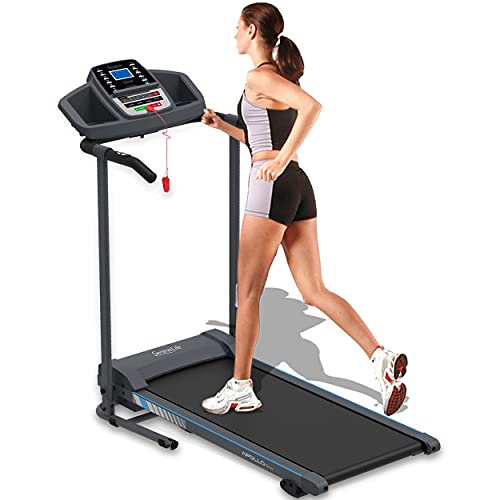Non-Folding Treadmills: The Ultimate Guide for Fitness Enthusiasts
As home physical fitness continues to gain traction, lots of people are seeking equipment that fulfills their requirements without compromising quality or efficiency. One essential player in this arena is the non-folding treadmill. Unlike folding treadmills, which are designed for density and portability, non-folding treadmills are typically more robust, providing enhanced durability and machine efficiency. This guide will check out the features, advantages, restrictions, and options offered for non-folding treadmills.
What is a Non-Folding Treadmill?
A non-folding treadmill is a stationary workout machine that does not have the capability to fold its deck for storage. Specifically designed to be a permanent component in physical fitness spaces, these treadmills normally have a larger footprint, permitting a host of comfy features fit for severe runners and gym-goers.
Advantages of Non-Folding Treadmills
- Stability and Durability: Non-folding treadmills generally have a stronger building, providing enhanced stability during high-intensity workouts. They are developed to manage varied user weights and running speeds, which can extend their lifespan.
- Advanced Features: Many non-folding models come equipped with advanced technological features, such as wise monitor systems, automated incline changes, and pre-set workout programs, which cater to major fitness lovers.
- Larger Running Surface: These treadmills typically offer a larger and longer running area, which can be particularly advantageous for runners who prefer to train at greater speeds or for those with longer strides.
- Better Motor Performance: Non-folding treadmills typically have more powerful motors compared to their folding counterparts, enabling much better performance throughout intense running sessions.
Disadvantages of Non-Folding Treadmills
- Space Requirements: Since they do not fold, non-folding treadmills require more space in your house or health club. If area is a restriction, this may be a critical factor to consider.
- Lack of Portability: These devices can be troublesome to move. It is challenging to transfer a non-folding treadmill compared to a folding one, which may be a downside for those who move regularly or reorganize home fitness center layouts often.
- Price: Non-folding treadmills are generally more costly than folding treadmills, primarily due to their sophisticated functions and resilient develop.
Key Features to Consider
When looking for the ideal non-folding treadmill, a number of functions must be considered to guarantee you make an informed decision:
| Feature | Importance |
|---|---|
| Motor Power | Look for a motor of at least 2.5 CHP for solid efficiency. |
| Belt Size | A belt width of 20 inches or larger is ideal for convenience and safety. |
| Incline Range | An incline of 10% to 15% offers more exercise variety. |
| Innovation Integration | Consider models with Bluetooth capabilities, exercise apps, and heart rate monitoring. |
| Service warranty | A robust guarantee (at least 10 years for the frame and motor) suggests sturdiness. |
Top Non-Folding Treadmills on the marketplace
Here is a thorough summary of some of the leading non-folding treadmills presently available:
| Treadmill Model | Motor Power (CHP) | Running Surface (inches) | Incline (%) | Price Range (GBP) | Warranty |
|---|---|---|---|---|---|
| NordicTrack Commercial 1750 | 3.75 | 22 x 60 | 15 | ₤ 1,799 - ₤ 2,199 | 10-Year Frame, 2-Year Parts |
| Sole F85 | 3.5 | 22 x 60 | 15 | ₤ 1,699 - ₤ 2,099 | Life Time Frame, 5-Year Parts |
| Life expectancy TR3000i | 2.5 | 20 x 56 | 15 | ₤ 999 - ₤ 1,299 | Life Time Frame, 5-Year Parts |
| ProForm Pro9000 | 3.0 | 22 x 60 | 15 | ₤ 1,499 - ₤ 2,299 | Lifetime Frame, 2-Year Parts |
| Horizon Treadmill 7.0 AT | 3.0 | 20 x 60 | 12 | ₤ 899 - ₤ 1,099 | Lifetime Frame, 1-Year Parts |
FAQs About Non-Folding Treadmills
1. Are non-folding treadmills much better than folding ones?Non -folding treadmills typically offer better stability, durability, and advanced functions. This makes them perfect for severe runners, however it ultimately depends on private requirements and available area.
2. Can a non-folding treadmill be used for walking?Yes! Non-folding treadmills are not restricted to running; they can likewise be ideal for walking and can accommodate a vast array of physical fitness levels. 3. How much area do I require for a non-folding treadmill? mouse click the next document is advised to have a dedicated area measuring a minimum of 7 feet long and 3 feet broad around the treadmill for safe usage. 4. Is it possible to carry a non-folding treadmill?While it can be done, it may need additional effort as they are typically heavierand bulkier than folding models. 5. What's the average lifespan
of a non-folding treadmill?With regular maintenance and correct use, non-folding treadmills can last between 10 and 15 years or more.
Non-folding treadmills represent a substantial investment
for those severe about keeping or enhancing their fitness. With their emphasis on toughness, stability,
and boosted features, they accommodate users pursuing efficiency and durability. Selecting the right design includes carefully considering your workout routines, space availability, and budget. By comprehending the qualities that make non-folding treadmills an outstanding alternative, individuals can make informed choices that will improve their home physical fitness experience. Whether it's for walking, running, or high-intensity training, the ideal non-folding treadmill can be a significant ally in accomplishing fitness goals.

